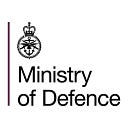Tracking hostile targets above and below the waves
Some years ago, Australia, Canada, New Zealand and the USA took in some of our airmen and women so that we could keep a skill set alive.
In 2010 the Royal Air Force’s maritime patrol aircraft — Nimrod MRA4 — was taken out of service and with the P-8A Poseidon not coming in until 2016, there were numerous years without this ability. A significant challenge faced the RAF… How do we keep our maritime reconnaissance skills alive?
The answer was Project Seedcorn. This project is a NATO maritime patrol project that sees men and women from the RAF integrating with their allied counterparts.
The aircrew worked with Australia, Canada, New Zealand and the USA to help maintain an anti-submarine and anti-surface warfare intelligence, surveillance and reconnaissance skill.
The Seedcorn crews did not get involved in frontline operations for the nations they were working alongside, instead, they got involved with the test and evaluation squadrons. These squadrons helped drive improvements for the frontline fleets.
Today, the UK now has the P-8A Poseidon (Poseidon MRA1). This is a multi-role maritime patrol aircraft, with world-class sensors and weapon systems. The aircraft is key to anti-submarine warfare, as well as surveillance and search and rescue missions.
The Poseidon’s state of the art equipment allows it to effectively track and hunt down submarines and other marine vessels. Equipped with torpedoes, the aircraft will then be able to engage with sub-surface targets.
The aircraft recently took part in Exercise Dynamic Mongoose, where it tested the ability of submarine crews to evade and detect incoming threats.
The Poseidon aircraft protects the UK’s continuous at-sea nuclear deterrent and is central to NATO missions across the North Atlantic, working closely with the US and Norwegian Poseidon fleets.
